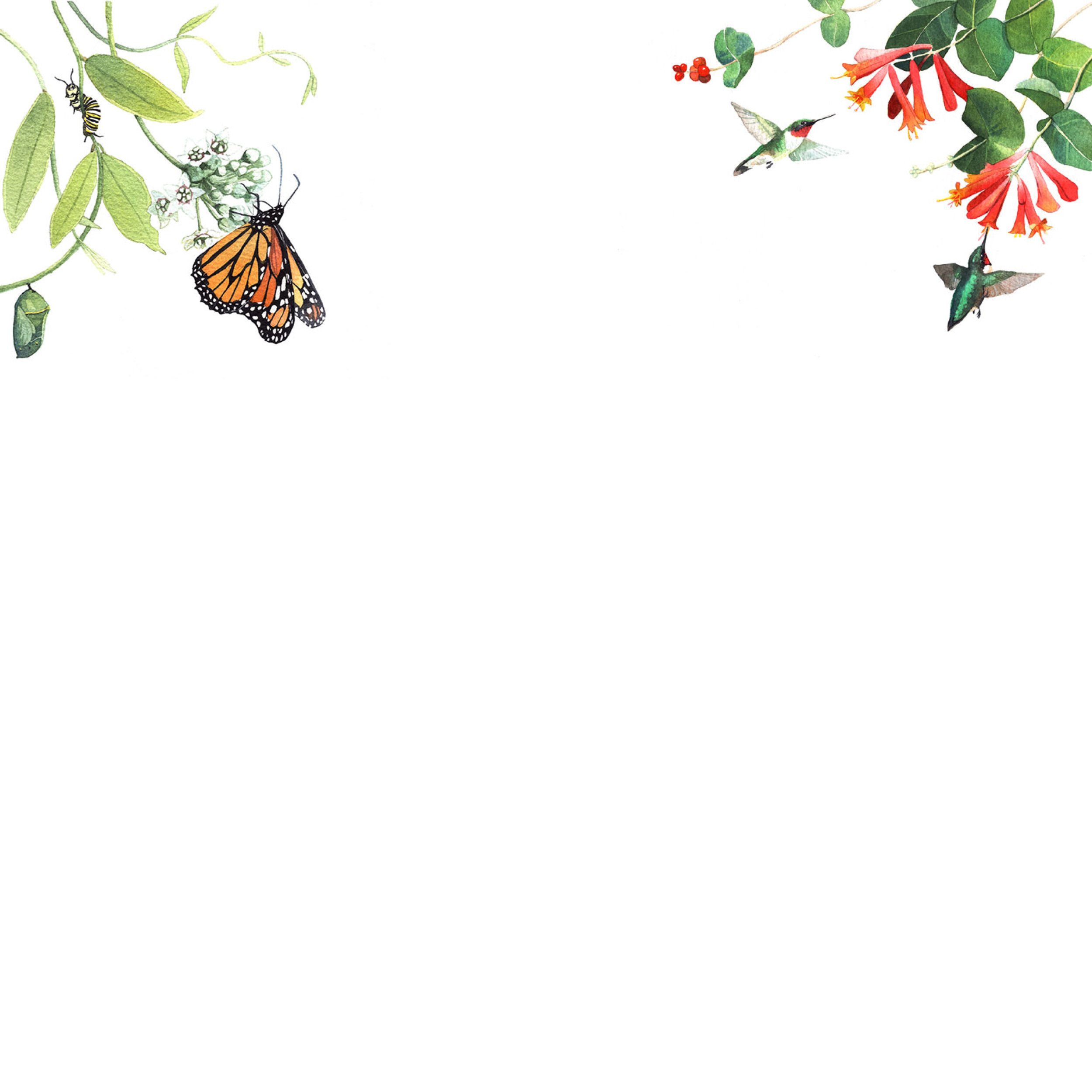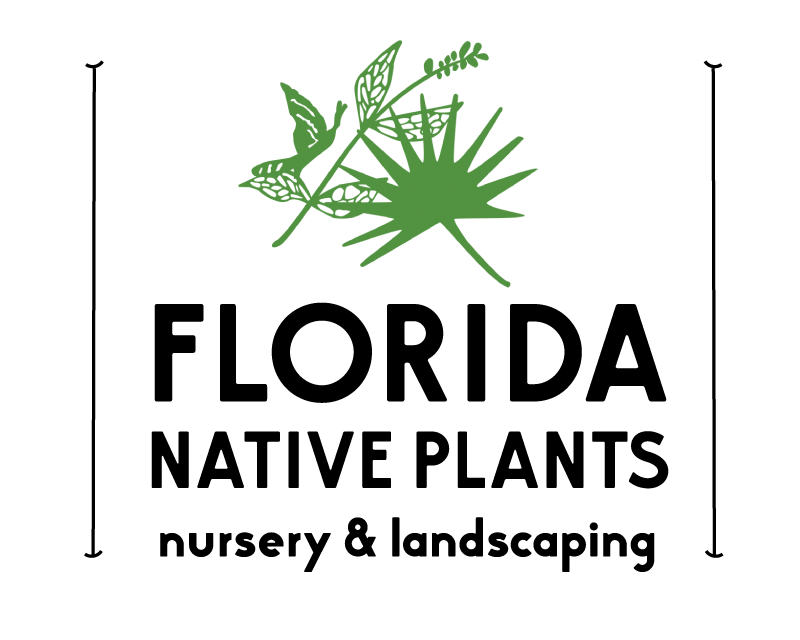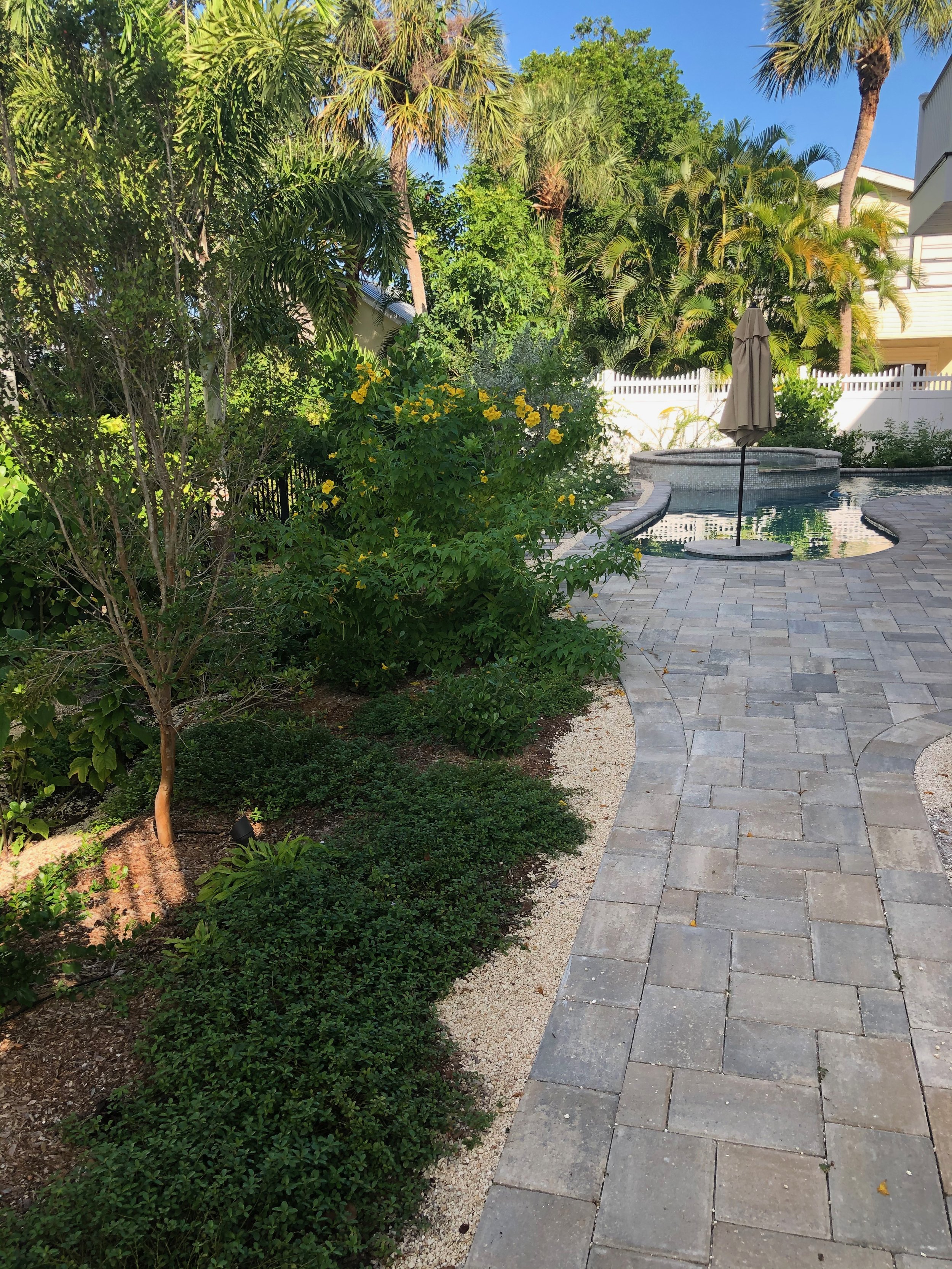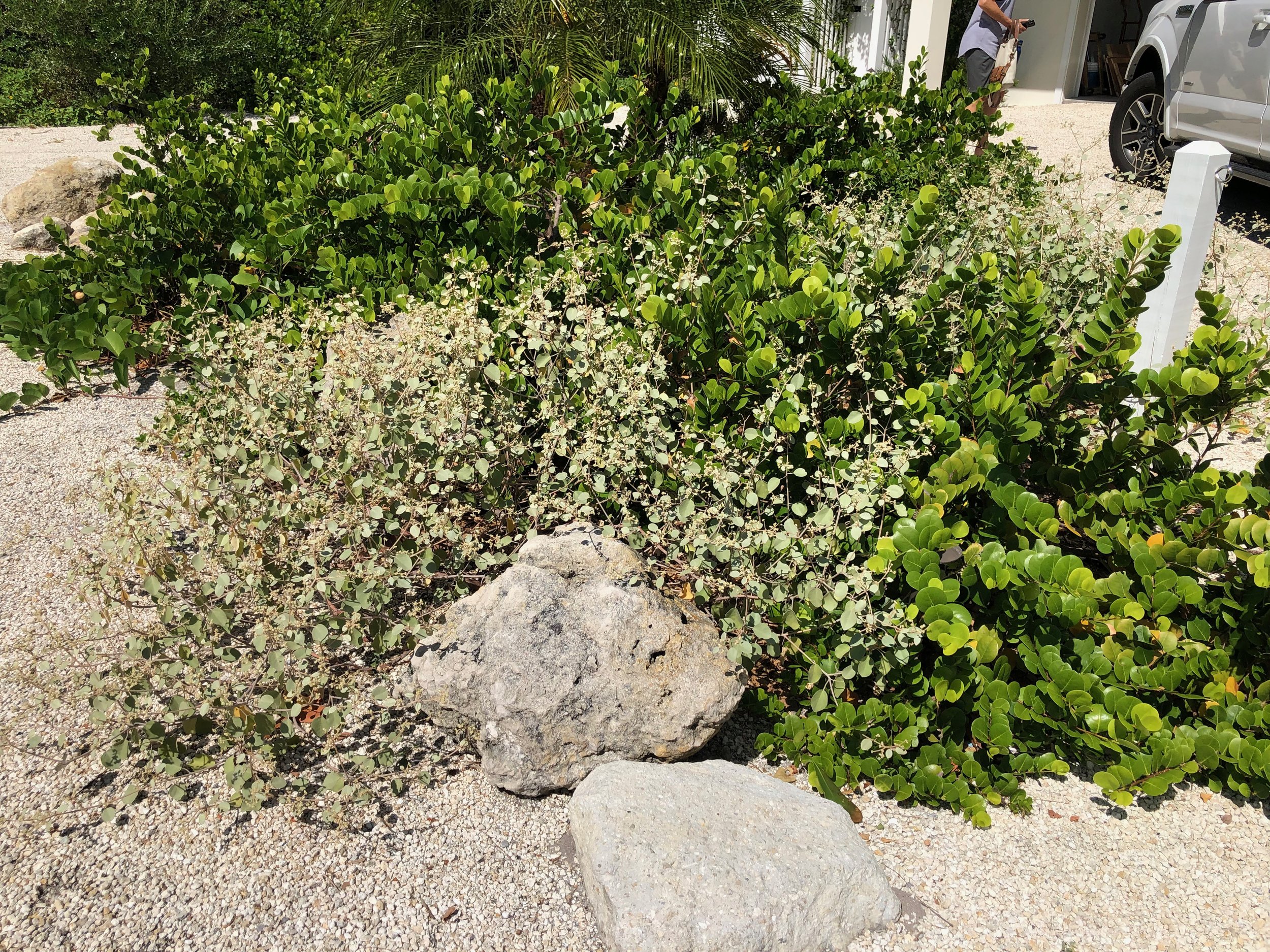
Holmes Beach (Coastal)
This newly built home is a tiny jaunt away from being directly on the beach, so the plants that I chose for this project needed to be hardy enough to endure the occasional light salt spray and, in most areas, full sun. Some of our native coastal plants are so hardy they can grow well in the harshest of beach conditions - nutrient-poor sand, full sun, wind and salt spray. Other native plants prefer to be sheltered a little bit from direct beach conditions but still thrive in coastal conditions with the occasional salt spray, wind and full sun. In addition to being hardy, the plants in this landscape benefit wildlife like pollinators and birds by providing a seasonal source of organic and naturally grown food and shelter. These plants do not require soil amendments, synthetic chemicals or fertilizers to keep them green and healthy. They help prevent soil and sand erosion and they also help with healthy water quality by absorbing pollutants and nutrients from stormwater runoff.
- Annie Schiller, Florida Native Plants Nursery Landscape Designer
Featured plants from left to right: Horizontal Indigoberry, Spanish Stopper, Beach Dune Sunflower, Coontie, White Beach Buttercup (non-native)
Featured plants from left to right: Horizontal Cocoplum, Sea Lavender
Featured plants from left to right: Pitch Apple, Firebush, Chapman’s Senna
Featured plants from left to right: Necklacepod, White Beach Buttercup (non-native), Silver Buttonwood, Red-tipped Cocoplum, Chapmans Senna, Horizontal Cocoplum, Seaside Goldenrod
Featured plants from front to back: Simpson’s Stopper, Twinflower, Yellow Elder (non-native)
Featured plant: Key West Morning Glory aka Skyblue Clustervine
Featured plants from left to right: Beach Croton, Horizontal Cocoplum
Featured plants from left to right in front: Sea Lavender, Horizontal Cocoplum, Seaside Goldenrod, Chapman’s Senna, Horizontal Indigoberry, Beach Dune Sunflower, Pitch Apple







